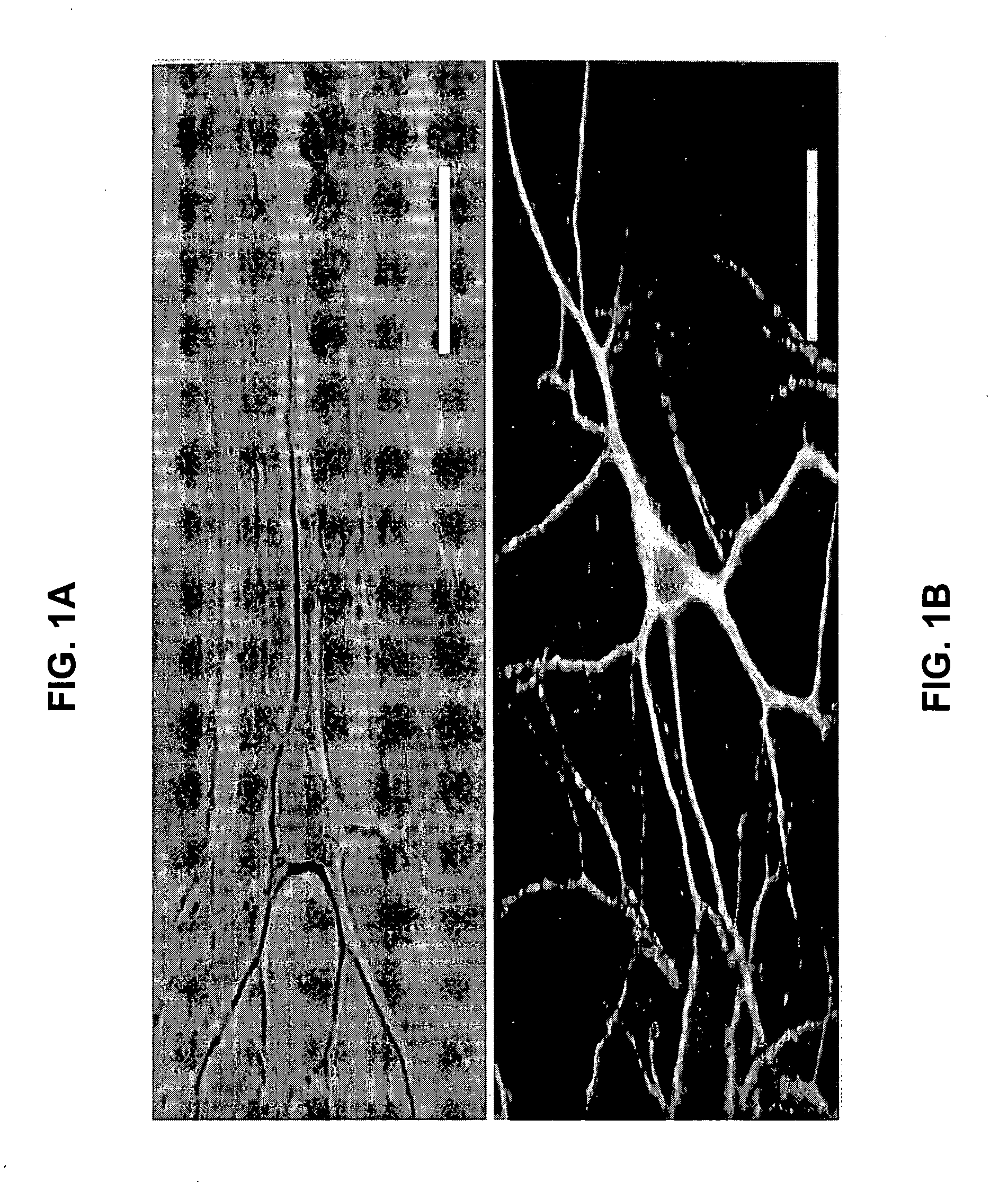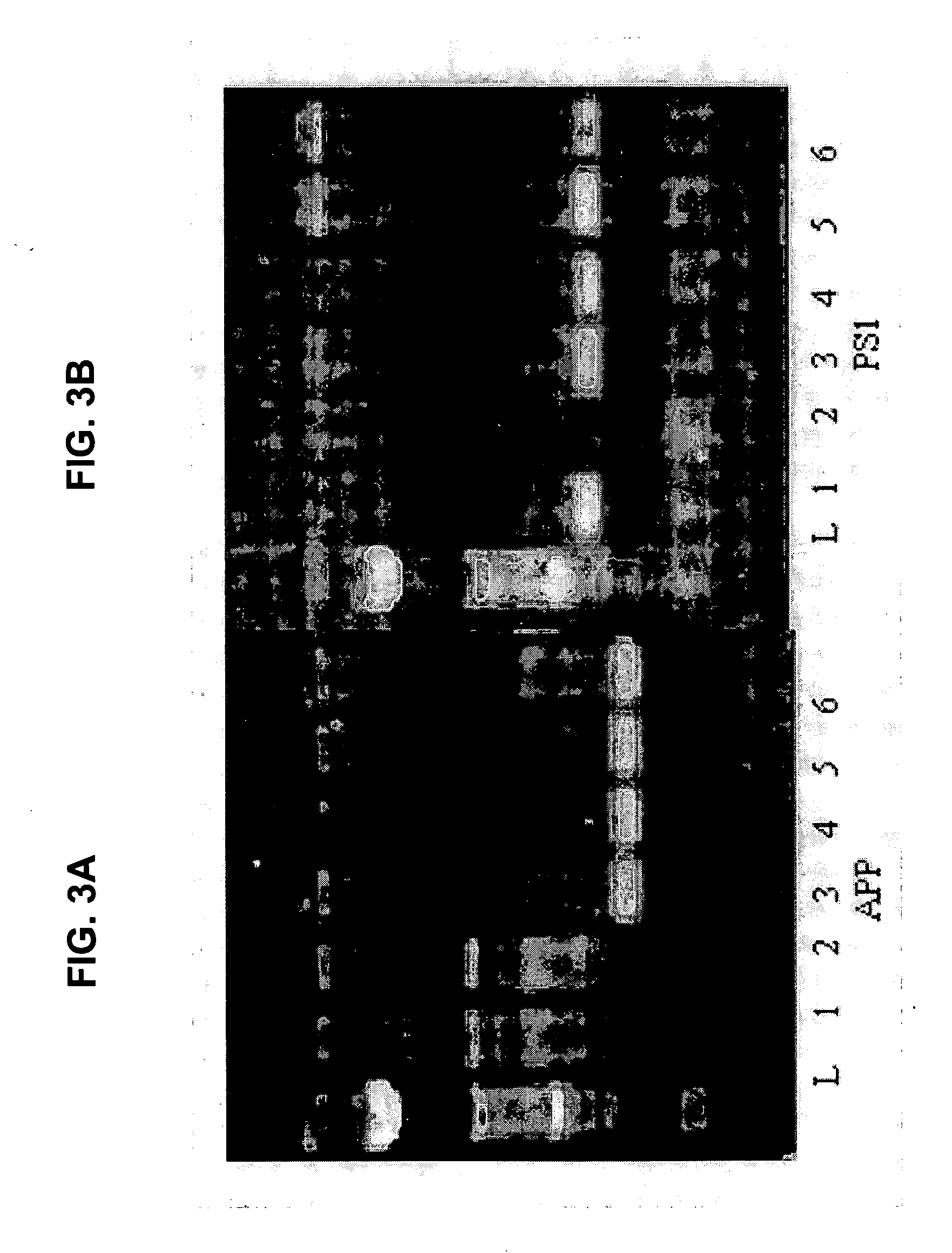Cell cultures from animal models of Alzheimer's disease for screening and testing drug efficacy
a cell culture and alzheimer's disease technology, applied in the field of cell cultures from animal models of alzheimer's disease for screening and testing drug efficacy, can solve the problems of high cost of vivo approaches, inability to rapidly and efficiently screen or test, and inability to quickly and efficiently solve drug discovery of alzheimer's disease or -amyloid-associated diseases. achieve the effect of reliable and efficient, economic
- Summary
- Abstract
- Description
- Claims
- Application Information
AI Technical Summary
Benefits of technology
Problems solved by technology
Method used
Image
Examples
example 1
Cell Cultures
[0062] Cell cultures were prepared from one-day-old mouse pups. The hippocampus, located in the medial surface of cerebral hemispheres of the brain, was surgically dissected from the remaining part of the brain under a stereo-microscope. By doing so, other types of cells not belonging to the hippocampus were excluded, while retaining all of the different types of hippocampal cells (both neuronal and glial). Cells were dissociated using enzymatic treatment with 0.25% trypsin (GIBCO BRL: cat #15090-046) in S-MEM (GIBCO BRL: cat #11380-037) for 30 minutes and subsequent trituration. Although trypsin is preferred, other enzymatic treatments (e.g., papain) will not change the outcome of the dissociation.
[0063] The cells were plated on glass coverslips (Fisher Scientific, Pittsburgh, Pa.: cat #12-518-105K) previously coated with (10 μg / ml) poly(D-lysine) (Sigma, St. Louis, Mo.: cat #P-7886) for at least 3 hours at 4° C., followed by laminin (1 mg / 50 ml) (BD Biosciences, San...
example 2
Use of the Cell Cultures of the Present Invention in AD or Beta-Amyloid-Related Disease Drug Screening / Testing
[0070] As an example of the utilization of the cell culture system according to the present invention for drug screening or testing, the cysteine protease inhibitor, E64, was tested to determine its capability of re-establishing normal synaptic transmission in cultures from double transgenic animals. E64 (1 μM), (Calbiochem, San Diego, Calif.) was added daily to the culture medium of cultured hippocampal neurons before recording spontaneous release of neurotransmitter using 6 day old cultured neurons.
[0071] The basal mEPSC frequency was recorded in cultures from double transgenic mice treated, or not treated, with E64, as well as cultures from WT mice, treated or not treated, with the inhibitor. A decrease of the mEPSC frequency in the treated mAPP / mPS1 mice (435 events / minute) was observed compared with the mEPSC in untreated mAPP / mPSZ1 (851 events / minute), as well as in ...
example 3
[0072] We have extended the validity of our findings obtained on the mAPP(K670N:M671L) / mPS1(M146L) mouse to another mouse model of Alzheimer's disease, the ABAD / hAPP mouse (the latter a minigene encoding mAPP695, 751 & 770 bearing mutations linked to familiar AD).
[0073] We have demonstrated that cultured hippocampal neurons from ABAD / hAPP mice release into the culture medium two major types of Aβ peptides, Aβ40 and Aβ42. Measurements of Aβ levels contained in the medium collected from 10-day-old ABAD / hAPP cultures revealed the presence of both peptides (average values of Aβ40=401.66±81.23 fmol / mg protein, and Aβ42=233.55±29.79 fmol / mg protein, with AP42 / 40 ratio=0.58±0.02, n=5 dishes). hAPP cultures showed values of Aβ40=260.26±76.98 fmol / mg protein, and Aβ42=137.22±44.57 fmol / mg protein, with Aβ42 / 40 ratio=0.52±0.02, n=5 dishes). In contrast, cultures from ABAD and WT littermates showed non-detectable levels of human Aβ40 and 42. These results are consistent with previous studies ...
PUM
 Login to View More
Login to View More Abstract
Description
Claims
Application Information
 Login to View More
Login to View More - R&D
- Intellectual Property
- Life Sciences
- Materials
- Tech Scout
- Unparalleled Data Quality
- Higher Quality Content
- 60% Fewer Hallucinations
Browse by: Latest US Patents, China's latest patents, Technical Efficacy Thesaurus, Application Domain, Technology Topic, Popular Technical Reports.
© 2025 PatSnap. All rights reserved.Legal|Privacy policy|Modern Slavery Act Transparency Statement|Sitemap|About US| Contact US: help@patsnap.com



